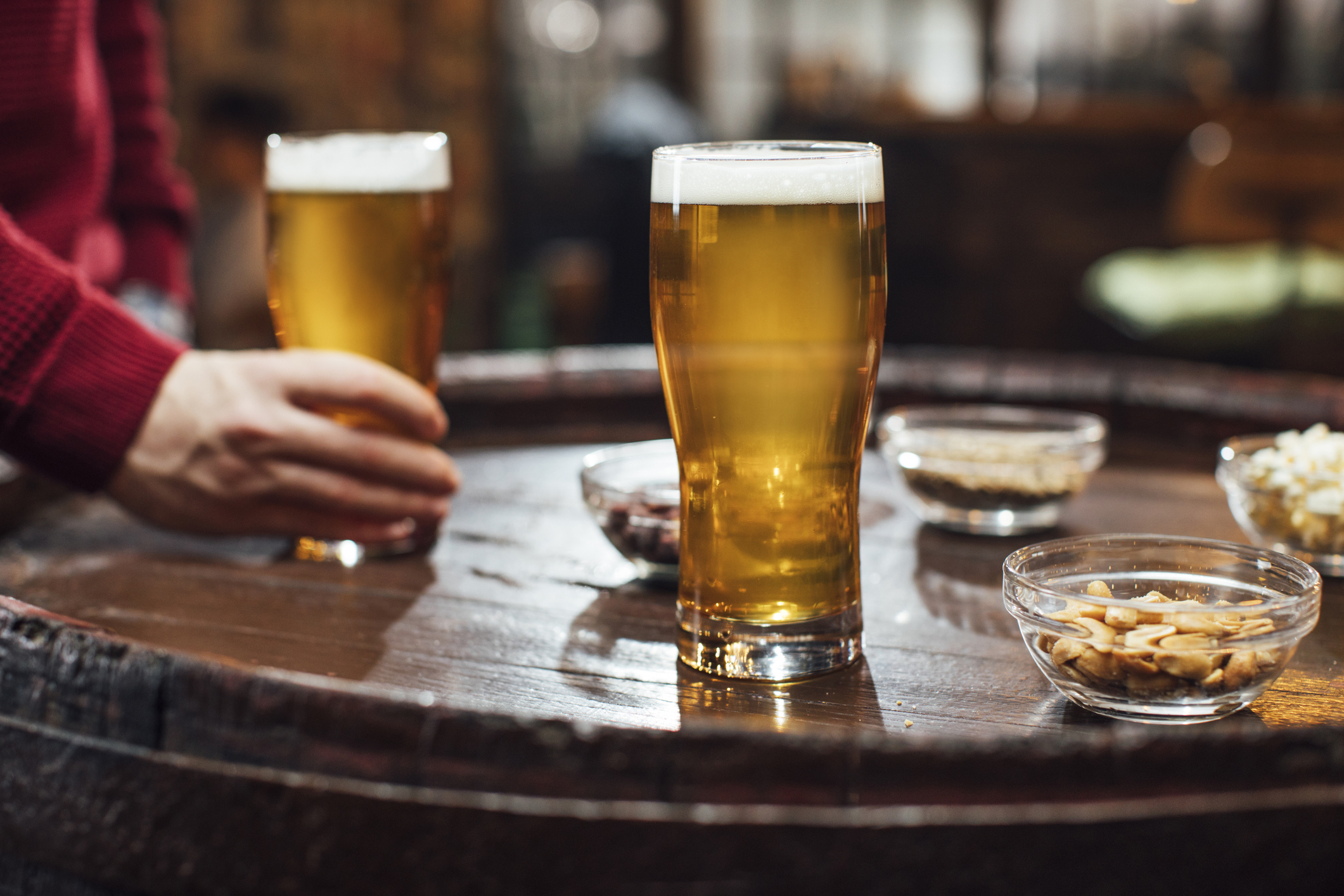There can be feelings of guilt, shame, and fear of stigma when one enters recovery and stops using a destructive substance. Those seeking sobriety may be fearful of family or co-workers finding out about addiction problems; there can be legal repercussions from addiction; and many individuals getting sober worry about repairing their relationships with people they have hurt during active addiction.
Addiction (including alcohol) is a serious, worldwide problem. According to the National Institute on Alcohol Abuse and Alcoholism (NIAAA), alcohol is the third leading cause of preventable death in the US and around the world. Roughly 500 people per day die of alcohol-related causes.
When it comes to addiction to different drugs, the United States has the highest rate of overdose compared to other modernized countries in the world—the national OD rate in the US is 21.6 deaths per 100,000 of the population.
There is no doubt that addiction is a serious problem and individuals, communities, medical professionals, and organizations need to work together to figure out how to reduce the stigma of addiction.
Is There Addiction Stigma in Circles of Recovery?
In recovery, a great emphasis is placed on 12-step groups, such as Alcoholics Anonymous and Narcotics Anonymous, which have both been the “gold standard” when it comes to alcohol and drug recovery for nearly a century. Research on AA is very inconclusive, as anonymity is one of the tenets of the program. For some, AA and NA are very effective, but others choose alternate paths to recovery.
Because 12-step recovery has been established for so long, there is much stigma surrounding newer paths to recovery, such as medication-assisted treatment, California sober philosophies, taking prescribed medications, and drinking mocktails or non-alcoholic beverages such as beer and wine. Below, we will delve into some of these topics to reduce the inter-recovery stigma surrounding them.
Remember that recovery is a personal journey, and recovery does not always equate to complete sobriety. Both AA and NA are abstinence-based programs, where members aim to be free from all psychoactive substances. In addition to the 12 Steps, other abstinence-based programs include SMART recovery (secular and evidence-based), Recovery Dharma (Buddhist), and Celebrate Recovery (Christian).
Additionally, some people aim for moderation instead of abstinence from their drug of choice and may attend meetings such as Moderation Management. All of these fall under the “recovery” umbrella, as those struggling with addiction use personal choice to find a program that works best for them. Below are some examples of reducing the stigma surrounding addiction, even after one has entered recovery.
What Is Medication-Assisted Treatment (MAT)?
Research has shown that a multifaceted, comprehensive approach to addiction recovery is best. This includes paths of recovery with detox and rehabilitation, followed by outside counseling, support groups such as AA or SMART Recovery, and medication management, and may include other facets, such as yoga and meditation.
Those who are recovering from opiate addiction may be placed on several different medications in detox, and these medications will continue for a year or longer, to slowly “wean” the person off the abused opiate. While these medications have some potential for abuse, drugs such as methadone, suboxone, and naltrexone are often used in MAT. While naltrexone acts as an opiate blocker (and is widely prescribed for alcohol cravings), methadone and suboxone are only partial opiate agonists, meaning there are low doses of opiate in the medication.
Countless medical journals and researchers have heralded the advances of medication-assisted treatment, which specifically helps those struggling with opiates and/or alcohol. While it will not work for anyone and carries some risk, it can be a life-saving measure for many as part of a personal recovery plan. MAT, in most cases, should not be utilized forever, but it is a bridge to full recovery from opiates.
Additionally, those in recovery may need medications, such as opiates or benzodiazepines, while in recovery, usually for the short term. A patient may need surgery, or perhaps a client needs brief treatment for mental health. This comes down to personal choice: Some people in recovery will refuse medication, while others may opt for taking it. It may be a good idea, depending on the drug, to have a trusted person administer the dose. If you are prescribed psychiatric medication for mental health issues, never stop taking it based on the advice of a layman (such as a person in a support group). Always consult your physician first.
What Does It Mean to Be California Sober?
If you attend a support group meeting that promotes complete abstinence, you may receive judgment or criticism if you’ve declared yourself “Cali sober.” Also called Green Recovery and Sobriety Support, a person who is “California sober” still consumes THC, often with a medical marijuana prescription under their doctor’s care, but remains abstinent from their drug of choice, often opioids or alcohol.
Being “Cali sober” will not work for everyone, and there is a risk of developing a marijuana addiction or “waking up” the neurotransmitters in the brain, causing the person to eventually seek out the destructive drug of choice, such as picking up a drink.
“Jackass” star Steve-O promotes complete sobriety, saying, “ “My weed bone’s connected to my booze bone, and my booze bone’s connected to my coke bone.” In other words, Steve-O has already attempted to use THC and nothing else, and ultimately, it triggers him to drink and use hard drugs.
However, some physicians say otherwise. Harvard professor and physician Dr. Peter Grinspoon endorses the use of THC while remaining abstinent from other substances. He wrote, “[Cannabis is] particularly efficacious, because it can help treat or palliate many of the symptoms that may have helped incite and fuel the addiction to these other drugs in the first place, such as anxiety, insomnia, chronic pain, and trauma.” In fact, some who call themselves “Cali sober” have been “sober” from their drug of choice for over a decade. “Cali sober” meetings and groups also exist virtually and in some areas.
More research is needed to see if “green” or “California sober” is an efficacious choice for those struggling with addiction, but it is a clear path to recovery for some. Physicians are also beginning to test the use of psilocybin (“magic mushrooms”) and ketamine to help with addiction and depression. These are all forms of harm reduction—but this is still recovery. If you are Cali sober and have been abstinent from your drug of choice, celebrate this victory. Quite often, THC users decide later on in their different recovery path to quit every substance entirely, but again, that is a personal choice that should not be judged or criticized.
Does Drinking Non-Alcoholic Beer Break Sobriety?
To reduce the stigma of addiction within recovery circles, non-alcoholic beer and spirits, and mocktails must be mentioned. The short answer is no—while you may have heard ‘non-alcoholic beer is for non-alcoholics,” if you partake in NA beer, wine, or spirits, it does not “break” your sobriety.
Another question to answer is, does nonalcoholic beer have alcohol? Most popular NA beers have an alcohol percentage of 0.3 to 0.4 percent alcohol, which is a trace amount. The healthy probiotic drink kombucha can also be a source of stress, as it often contains up to 0.5 percent alcohol.
There are NA beers that have a 0.0 percent alcohol content, but this is a more recent phenomenon as of 2024. This is because the brewing process makes it difficult to extract the alcohol completely.
What is a mocktail? These are crafted mixed drinks often made with juice or bar mixes, such as margarita or mojito mocktails. Where these may look and feel like a drink, there is no alcohol in a mocktail in most circumstances, making it a safer choice for those who have an alcohol problem. However, some people may find mocktails triggering and would rather avoid them entirely.
The bottom line? It still comes down to personal choice. Some who have struggled with alcohol (or other drugs) can occasionally enjoy an NA beer or glass of wine without incident. For others, the taste and trace alcohol content can trigger an alcohol craving. It’s a slippery slope, but if one is successful at drinking NA beer while maintaining alcohol sobriety, it’s a win.
With the devastation alcohol abuse brings and the number of drug overdoses per day, it’s imperative not to criticize your fellow peers because they’ve taken a different path to recovery.
Recovery is not a one-size-fits-all problem, and there’s no one treatment or group that’s a fit for everyone. If someone is a member of a 12-step or other program, criticism and judgment can ultimately lead to them feeling unsupported, and constant support is a key piece of the recovery process.
If you or a loved one is struggling with addiction, Mountainside can help.
Click here or call (888) 833-4676 to speak with one of our addiction treatment experts.

 By
By 







